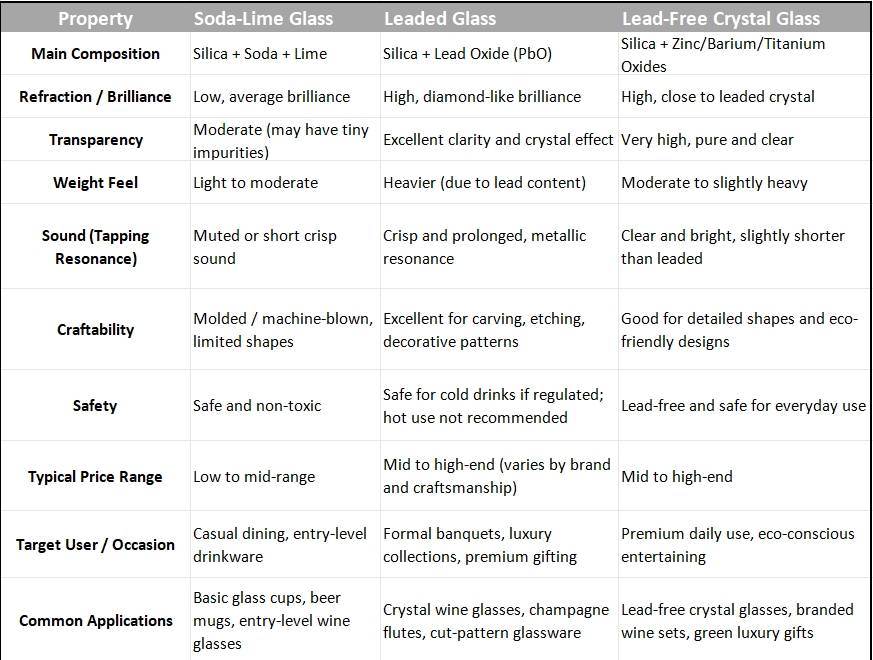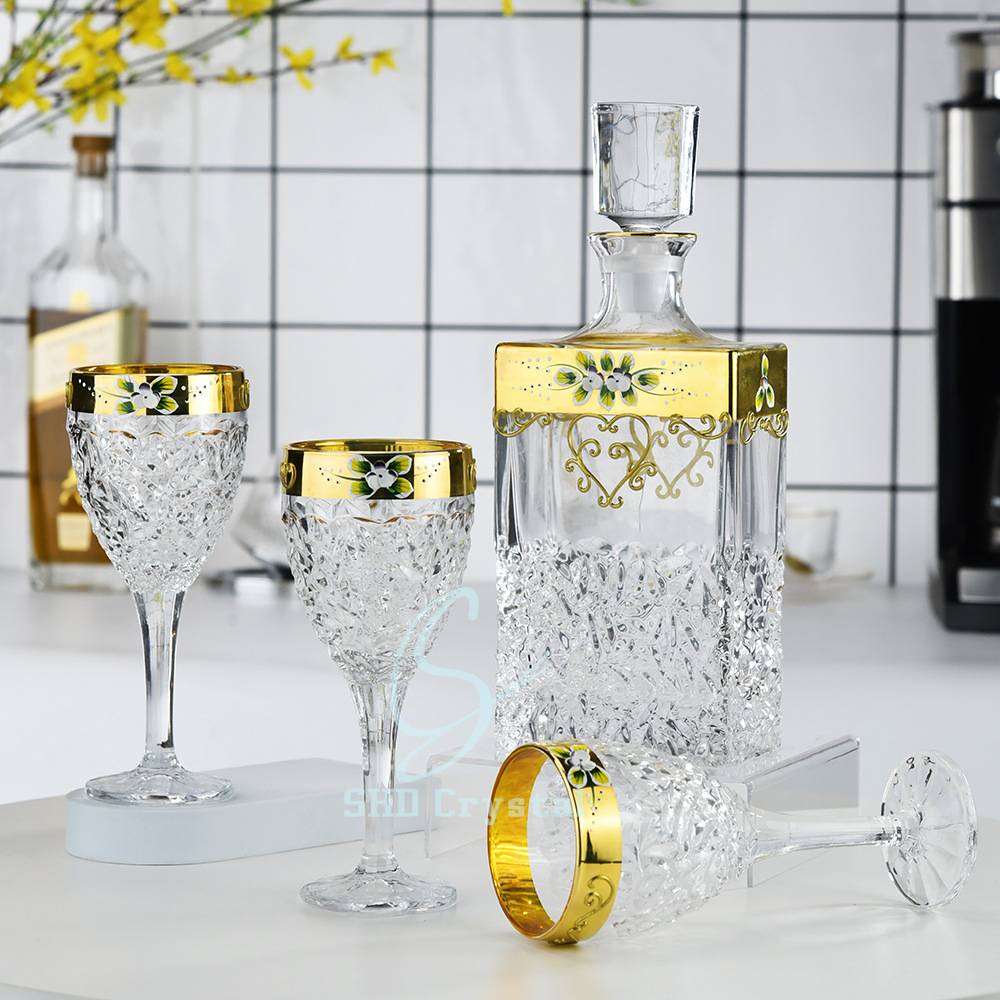> Blogs > Choosing the Right Glass for Your Wine: Soda-Lime and Leaded Glass
Choosing the Right Glass for Your Wine: Soda-Lime and Leaded Glass
Core keywords: soda-lime glass and leaded glass, leaded glass, crystal glass wineware
Not every wine glass is made the same, and the material makes all the difference. The type of material used—soda-lime glass and leaded glass—can dramatically affect the clarity, weight, resonance, and overall feel of your drinkware. For discerning wine lovers, understanding these materials is the first step in upgrading to premium drinkware.
Understanding Soda-Lime Glass and Leaded Glass in Wineware Materials
What Is Soda-Lime Glass?
Because of its durability and low cost, soda-lime glass is a staple material in items like jars, bottles, and basic drinkware. It’s primarily composed of silica (sand), sodium carbonate (soda), and calcium oxide (lime). While durable and cost-effective, soda-lime glass tends to be thicker, heavier, and less brilliant than its luxury counterpart.
Although some modern wine glasses made from soda-lime glass are machine-thinned for elegance, they often lack the visual sparkle and refined acoustic “ping” that wine connoisseurs seek.
What Is Leaded Glass?
Leaded glass, often referred to as crystal, substitutes part of the calcium content with lead oxide to boost brilliance and weight. This composition enhances several key properties:
-Refractive Index: Leaded glass bends light beautifully, giving crystal glassware its signature brilliance and sparkle.
-Weight and Clarity: The material feels heavier in the hand and offers superior transparency.
-Sound: When tapped, it emits a distinct, prolonged tone prized by luxury glassware collectors.
For those looking to make a statement with their drinkware, leaded crystal wine glasses embody sophistication and craftsmanship.
Is Leaded Glass Safe?
Modern leaded glass used for wineware is entirely safe for use, especially when served cold. International standards regulate the amount of lead and its leachability. For extra peace of mind, many brands—including ours—also offer lead-free crystal glassware, which mimics the brilliance of leaded glass by using alternative oxides like barium or zinc.
Why Crystal Glassware Elevates the Experience
Whether leaded or lead-free, high-quality crystal glassware enhances the wine-drinking experience by:
- Improving the visual appeal through better clarity and light refraction
- Offering a more refined texture and feel
- Highlighting the aroma and flavor profile through thinner rims and elegantly shaped bowls
When you choose our handcrafted drinkware, you’re selecting more than a vessel—you’re investing in a multisensory ritual.

Conclusion: Material Matters
In the world of wineware, the difference between soda-lime glass and leaded glass is more than technical—it’s experiential. While soda-lime options are functional, they often fall short of the luxurious qualities offered by finely crafted crystal glassware. Whether you prefer the radiance of leaded glass or the safety of lead-free alternatives, our collection of artisan-made wine glasses is designed to bring elegance and performance to every pour.
Discover Our Handcrafted Crystal Glassware
At SHD Crystal, we specialize in premium crystal glass wineware with Decanter
, including both leaded and lead-free options. Each piece is handcrafted using traditional glassblowing techniques to achieve exceptional clarity, brilliance, and artistry.
Explore our full collection today and elevate every toast with timeless elegance.
👉 Browse Our Wine Glass Collection

- : info@shdcrystal.com
- : +86-755-2335 8353
- : No. 68 Shasong Road, Shajing Street, Bao'an District, Shenzhen, Guangdong Province
Follow us
